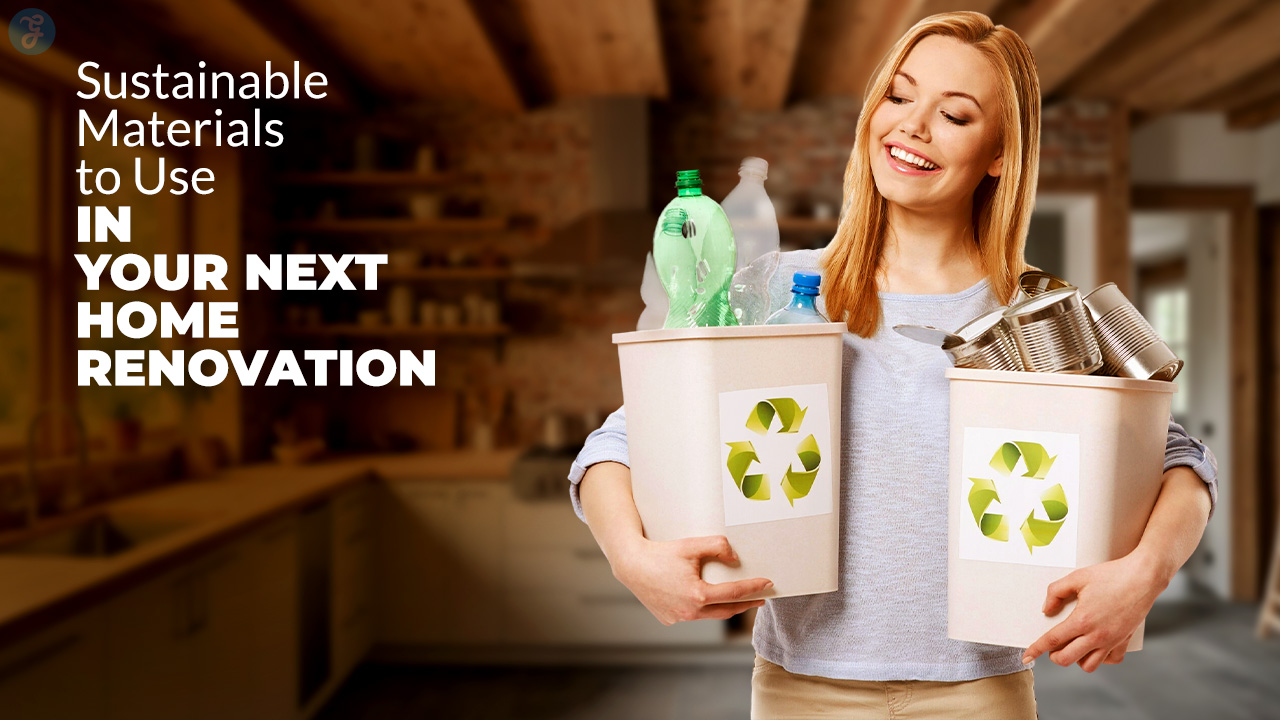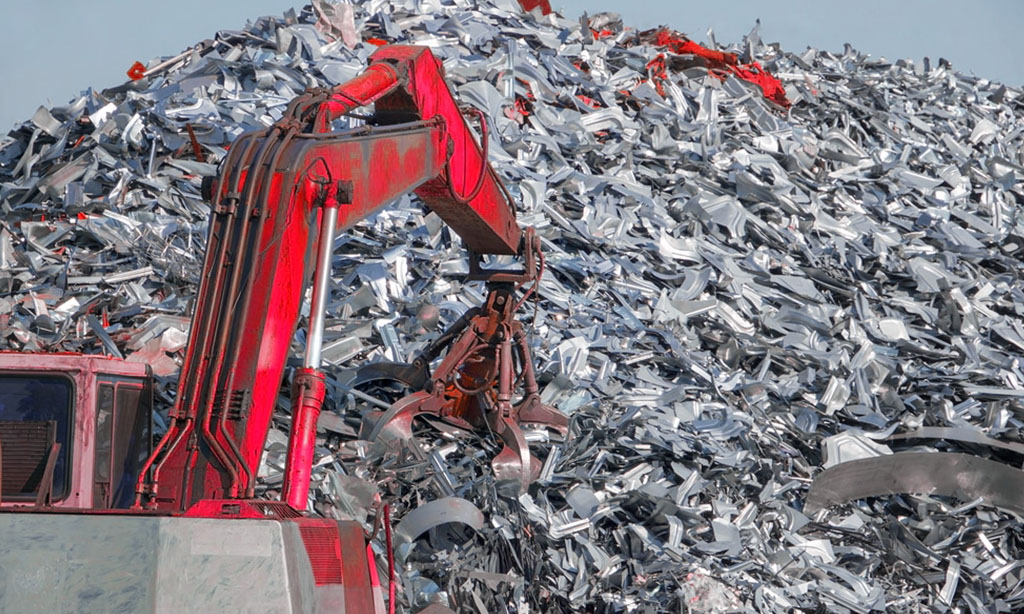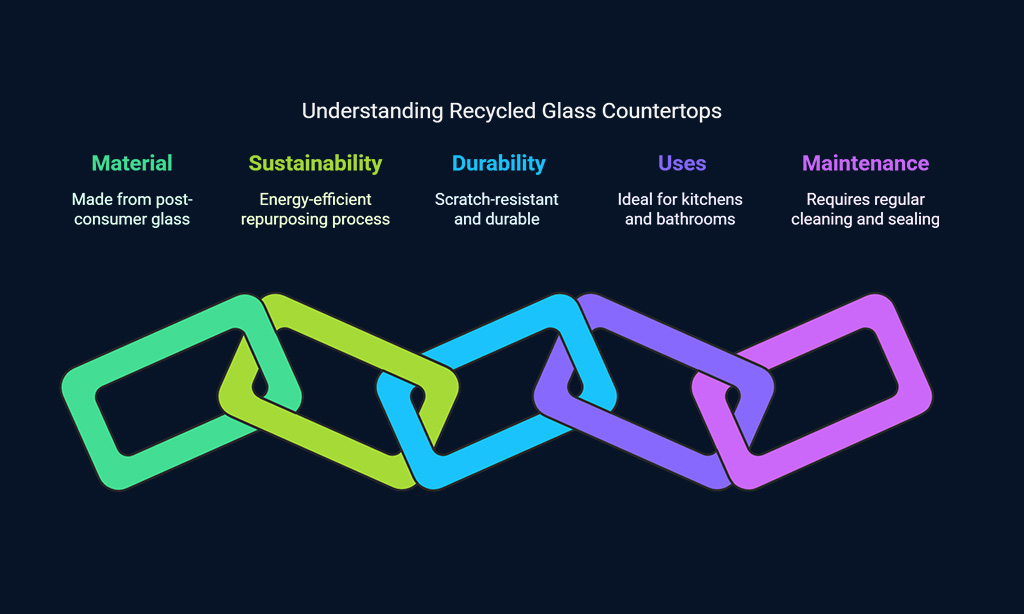In recent years, the importance of sustainability has increased across all sectors, and home renovation is no exception. The materials we choose for renovations can have a lasting impact on the environment.
Whether you’re aiming for a fully eco-friendly renovation or simply looking to add a few sustainable touches to your home, the materials you select are a key factor in minimizing your carbon footprint.
This comprehensive guide will explore 10 sustainable materials to use in your next home renovation, offering practical advice, detailed insights, and examples to help you make informed, eco-friendly choices.
Introduction to Sustainable Materials in Home Renovation
The construction and renovation industry accounts for a significant portion of global carbon emissions. By choosing sustainable materials, homeowners can drastically reduce their environmental impact. Sustainable materials are renewable, durable, and contribute to a healthier indoor environment, making them essential to any home renovation project.
Why Sustainable Materials Matter
The environmental impact of home renovations is often underestimated. Conventional materials such as plastic, fiberglass, and vinyl have high embodied energy, meaning a lot of resources are required to produce and transport them. By opting for sustainable materials to use in your next home renovation, you can:
- Reduce your carbon footprint: Sustainable materials require less energy to produce and transport.
- Support renewable resources: Materials like bamboo and cork regenerate quickly, unlike hardwoods and other non-renewable resources.
- Minimize waste: Many sustainable materials, such as recycled steel and reclaimed wood, help keep waste out of landfills.
- Improve air quality: Materials that are free from volatile organic compounds (VOCs) improve indoor air quality and overall health.
Benefits of Using Eco-friendly Materials
The use of sustainable materials has far-reaching benefits, beyond just the environmental impact:
- Energy efficiency: Materials like wool insulation or hempcrete help with temperature regulation, reducing heating and cooling costs.
- Longevity and durability: Many sustainable materials are known for their strength and long-lasting performance, reducing the need for frequent replacements.
- Healthier living environments: By eliminating harmful chemicals, sustainable materials create healthier, non-toxic indoor environments.
- Cost savings: Though some sustainable materials may have higher upfront costs, they often offer long-term savings through energy efficiency and durability.
How Sustainable Materials Enhance Home Value
Sustainable materials are not only good for the environment but can also enhance your home’s market value. Eco-friendly homes are increasingly sought after by buyers who value energy efficiency, healthier living conditions, and low-maintenance features. Renovating with sustainable materials may help you command a higher price when selling your home.
Top 10 Sustainable Materials for Your Next Home Renovation
Here, we explore 10 sustainable materials to use in your next home renovation, detailing their benefits, uses, and how to incorporate them into various renovation projects.
1. Bamboo Flooring
Overview: Bamboo is one of the fastest-growing plants on Earth, making it an excellent renewable resource for flooring. It’s durable, stylish, and highly sustainable.
Benefits of Bamboo Flooring:
- Renewable resource, as bamboo grows quickly without the need for replanting.
- Resistant to moisture, which makes it a good option for areas like kitchens and bathrooms.
- Provides a modern, sleek look similar to hardwood but at a lower price point.
Installation Tips:
- Subflooring: Bamboo flooring can be installed over a variety of subfloors, including plywood, concrete, or existing floors.
- Maintenance: Keep bamboo floors clean by using a soft mop and avoiding harsh chemicals.
| Material | Sustainability | Durability | Installation | Maintenance |
| Bamboo | Fast-growing, renewable | Highly durable | Glue-down, nail-down, or floating installation | Regular sweeping, occasional mopping |
2. Recycled Steel
Overview: Steel is one of the most recycled materials in the world. Using recycled steel for framing and other structural elements helps reduce the need for new mining and extraction.
Advantages of Recycled Steel:
- Extremely strong and durable, perfect for structural use.
- Can be used in various applications, from framing to decorative elements like railings and doors.
- Recycled steel requires less energy to produce than virgin steel, making it more environmentally friendly.
Common Uses in Renovation:
- Framing: Steel framing provides greater strength and longevity compared to wood.
- Roofing: Recycled steel is often used for roofing materials due to its weather resistance.
| Material | Sustainability | Durability | Installation | Maintenance |
| Recycled Steel | 100% recyclable, low-energy production | Extremely durable | Welding, bolting | Minimal, occasional coating |
3. Cork Flooring
Overview: Cork is made from the bark of cork oak trees, which regenerate naturally, making it a renewable and sustainable material for flooring.
Sustainability and Durability:
- Renewable: Cork trees regenerate after harvesting, allowing for sustainable production.
- Durable: Cork flooring is naturally resistant to wear and tear, providing an ideal option for high-traffic areas.
- Comfort: Cork provides cushioning underfoot, making it comfortable to walk on.
Installation and Maintenance:
- Installation: Cork tiles can be glued down or installed as floating floors.
- Maintenance: Easy to clean with a soft broom or vacuum. Cork should be sealed periodically to prevent water damage.
| Material | Sustainability | Durability | Installation | Maintenance |
| Cork Flooring | Regenerative, biodegradable | Wear-resistant, shock-absorbent | Glue-down, floating | Periodic sealing, regular cleaning |
4. Reclaimed Wood
Overview: Reclaimed wood is salvaged from old buildings, barns, and other structures. It’s an excellent way to reuse materials and preserve the natural beauty of wood.
Why Choose Reclaimed Wood:
- Eco-friendly: Reusing wood prevents deforestation and keeps valuable materials out of landfills.
- Unique Aesthetic: Each piece of reclaimed wood has its own history, adding character to your home.
- Durable: Reclaimed wood is often older and more durable than newly harvested timber.
Popular Uses in Renovation:
- Flooring: Adds warmth and a rustic charm to any room.
- Furniture: Reclaimed wood can be used for custom furniture pieces.
- Wall Paneling: A great option for creating feature walls.
| Material | Sustainability | Durability | Installation | Maintenance |
| Reclaimed Wood | Upcycled, reduces deforestation | Highly durable | Nail-down, glue-down | Minimal, occasional refinishing |
5. Low-VOC Paint
Overview: VOCs (volatile organic compounds) are chemicals found in many traditional paints that can negatively affect indoor air quality. Low-VOC paints reduce these harmful emissions.
Benefits of Low-VOC Paints:
- Healthier: Low-VOC paints improve indoor air quality by releasing fewer toxins.
- Environmentally friendly: These paints have a lower environmental impact due to reduced chemical emissions.
- Variety: Available in a wide range of colors and finishes.
Application Tips:
- Ensure proper ventilation during application.
- Choose paints with a long-lasting finish to reduce the frequency of re-painting.
| Material | Sustainability | Durability | Application | Maintenance |
| Low-VOC Paint | Low-emission, non-toxic | Long-lasting | Easy to apply with brushes or rollers | Minimal, occasional touch-ups |
6. Hempcrete
Overview: Hempcrete is a bio-composite material made from the hemp plant, lime, and water. It’s known for being a carbon-negative material, meaning it absorbs more carbon dioxide during its life cycle than is emitted in its production.
Benefits of Hempcrete:
- Carbon negative: Hempcrete sequesters carbon throughout its life, reducing overall carbon emissions.
- High insulation properties: Excellent thermal and sound insulation, which improves energy efficiency and indoor comfort.
- Non-toxic and breathable: Hempcrete is safe for human health and allows buildings to “breathe,” reducing the risk of mold and moisture buildup.
Common Uses:
- Wall Insulation: Hempcrete is ideal for insulating walls in new builds and renovations due to its high thermal efficiency.
- Eco-friendly Home Building: It can be used as a green building material to replace concrete or brick in some applications.
| Material | Sustainability | Durability | Installation | Maintenance |
| Hempcrete | Carbon-negative, renewable | Durable, insulating | Mixed on-site, poured into forms | Minimal, maintains insulating properties |
7. Recycled Glass Countertops
Overview: Recycled glass countertops are made from post-consumer glass that has been repurposed into a beautiful, functional surface. This material provides a unique aesthetic, as it often features a mix of colors and textures depending on the type of glass used.
Durability and Aesthetic Appeal:
- Durable: Recycled glass is tough and resistant to scratches and stains, making it perfect for high-use areas like kitchens and bathrooms.
- Unique Design: The variety of glass types used in these countertops—ranging from bottles to mirrors—gives each countertop a one-of-a-kind look.
Maintenance Tips:
- Sealing: These countertops may require sealing to prevent staining, but once sealed, they are very low-maintenance.
- Cleaning: Use a mild soap solution and a soft cloth for regular cleaning.
| Material | Sustainability | Durability | Uses | Maintenance |
| Recycled Glass | Repurposed, energy-efficient | Scratch-resistant, durable | Kitchen, bathroom countertops | Regular cleaning, occasional resealing |
8. Natural Stone
Overview: Natural stone, such as granite, marble, and slate, is a timeless material that has been used for centuries in construction. When responsibly sourced, natural stone can be a highly sustainable option for home renovations.
Benefits of Natural Stone:
- Long-lasting: Natural stone is extremely durable, often lasting for decades with minimal maintenance.
- Thermal Mass: Stone retains heat, making it an excellent material for regulating indoor temperature and energy use.
- Aesthetic appeal: Offers a luxurious, timeless look and is available in various colors, patterns, and textures.
Common Uses:
- Countertops: Durable and beautiful, natural stone countertops are a popular choice for kitchens and bathrooms.
- Flooring and Walls: Stone tiles are ideal for high-traffic areas like entryways and bathrooms.
| Material | Sustainability | Durability | Uses | Maintenance |
| Natural Stone | Responsibly sourced, long-lasting | Durable, heat-resistant | Countertops, floors, walls | Minimal, sealing for marble/granite |
9. Wool Insulation
Overview: Wool insulation is made from sheep’s wool, which is a natural, renewable resource. It is biodegradable, making it an eco-friendly choice for home insulation.
Sustainability and Performance:
- Thermal and acoustic insulation: Wool provides excellent thermal insulation and also reduces noise between rooms.
- Moisture regulation: Wool can absorb and release moisture without compromising its insulating properties.
- Non-toxic: No harmful chemicals are used, making it safe for the indoor environment.
Installation and Maintenance:
- Installation: Wool insulation comes in batts, rolls, or loose-fill, and is installed just like traditional insulation materials.
- Maintenance: Wool is naturally resistant to pests and mold, but it is important to keep it dry to maintain its insulating performance.
| Material | Sustainability | Durability | Installation | Maintenance |
| Wool Insulation | Renewable, biodegradable | Long-lasting, mold-resistant | Batts, rolls, or loose-fill | Periodic inspection for moisture buildup |
10. Clay Plaster
Overview: Clay plaster is made from natural clay, sand, and water. It is a non-toxic, biodegradable material that creates a smooth, breathable finish for walls and ceilings.
Benefits of Clay Plaster:
- Non-toxic and natural: Clay plaster contains no harmful chemicals and improves indoor air quality by reducing dust and pollutants.
- Breathability: Its porous nature allows for moisture regulation, which can prevent mold and mildew.
- Aesthetic appeal: Clay plaster provides a smooth, matte finish that adds natural beauty and warmth to any room.
Application and Maintenance:
- Application: It can be applied directly to walls and ceilings with a trowel. Clay plaster can be customized with different colors and textures.
- Maintenance: Clay plaster is highly durable and requires little maintenance. If it is damaged, small repairs can be made easily.
| Material | Sustainability | Durability | Installation | Maintenance |
| Clay Plaster | Non-toxic, biodegradable | Durable, breathable | Trowel application | Minimal, repairable |
Sustainable Materials for Specific Home Renovation Projects
In addition to general materials, certain sustainable options are ideal for specific areas of your home. Let’s look at how these materials can be utilized in common home renovation projects.
Kitchen Renovation
Consider using recycled glass, bamboo, or quartz (engineered from recycled materials) for countertops. These options provide durability, aesthetics, and sustainability.
Sustainable Flooring Options:
Bamboo, cork, and reclaimed wood are all excellent choices for kitchen floors. These materials are moisture-resistant, durable, and easy to clean, making them ideal for high-traffic areas.
| Material | Sustainability | Durability | Uses |
| Recycled Glass Countertops | Recycled, reduces waste | Durable, unique | Kitchen countertops |
| Cork Flooring | Renewable, biodegradable | Durable, moisture-resistant | Flooring |
| Bamboo Flooring | Renewable, low-energy production | Durable, stylish | Flooring |
Bathroom Renovation
Recycled glass tiles are a perfect option for bathrooms, offering a sleek, modern look while repurposing waste materials. These tiles are durable and easy to maintain.
Sustainable Shower Materials:
Consider using natural stone, bamboo, or reclaimed wood for shower enclosures. These materials provide a spa-like aesthetic and are water-resistant, making them suitable for bathrooms.
| Material | Sustainability | Durability | Uses |
| Recycled Glass Tiles | Recycled, low-energy production | Stain-resistant | Bathroom walls, backsplashes |
| Natural Stone | Durable, natural | Long-lasting | Shower enclosures, walls |
The Impact of Using Sustainable Materials
Environmental Benefits of Sustainable Materials
Using sustainable materials to use in your next home renovation helps minimize resource extraction, reduces carbon emissions, and promotes a circular economy by repurposing materials.
Reducing Carbon Footprint:
Materials like hempcrete, bamboo, and recycled steel reduce your home’s overall carbon footprint by storing more carbon than is emitted during their production.
Promoting Biodiversity:
Sustainable practices, such as using reclaimed wood and certified sustainable timber, help protect forests and biodiversity by preventing over-exploitation.
Cost Savings Over Time
Sustainable materials are often more energy-efficient, reducing long-term utility costs. For example, wool insulation helps keep homes warm in winter and cool in summer, cutting heating and cooling costs significantly.
Energy Efficiency and Long-Term Savings:
Materials like hempcrete and low-VOC paints also contribute to lower energy bills, making your renovation more cost-effective in the long run.
The Return on Investment (ROI) of Sustainable Renovations:
Eco-friendly renovations not only save money but can also increase your home’s value. A recent study by the National Association of Realtors found that homes with green certifications sold for 9% more on average than their non-green counterparts.
Wrap Up: Making Your Home Renovation More Sustainable
When planning your next home renovation, the choice of materials is crucial in making a positive environmental impact.
From bamboo flooring to recycled glass countertops, sustainable materials to use in your next home renovation offer a wide range of benefits, from energy efficiency to increased home value.
By making mindful, informed choices, you can create a space that’s not only beautiful and functional but also eco-friendly and sustainable for years to come.












































